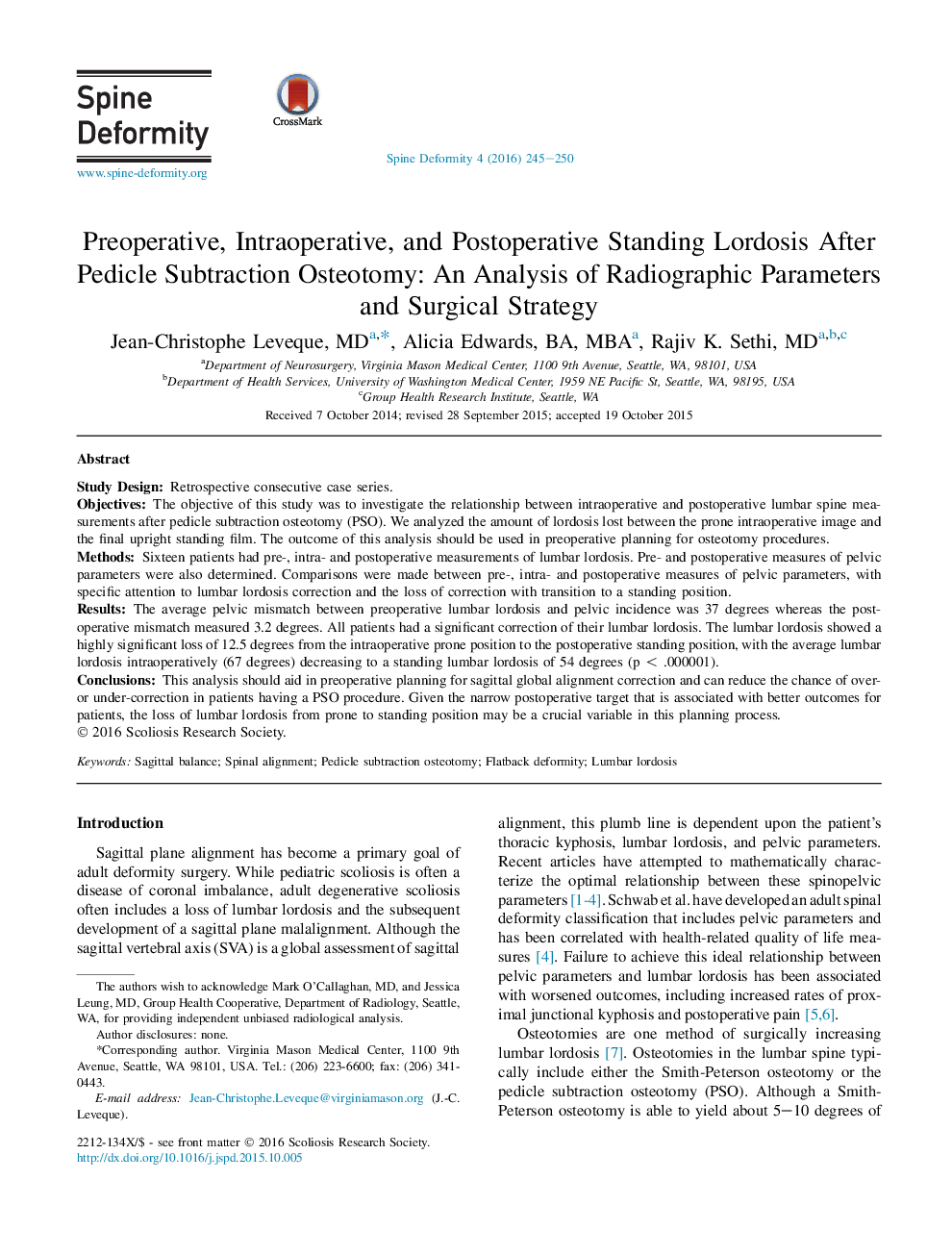| Article ID | Journal | Published Year | Pages | File Type |
|---|---|---|---|---|
| 4095390 | Spine Deformity | 2016 | 6 Pages |
Study DesignRetrospective consecutive case series.ObjectivesThe objective of this study was to investigate the relationship between intraoperative and postoperative lumbar spine measurements after pedicle subtraction osteotomy (PSO). We analyzed the amount of lordosis lost between the prone intraoperative image and the final upright standing film. The outcome of this analysis should be used in preoperative planning for osteotomy procedures.MethodsSixteen patients had pre-, intra- and postoperative measurements of lumbar lordosis. Pre- and postoperative measures of pelvic parameters were also determined. Comparisons were made between pre-, intra- and postoperative measures of pelvic parameters, with specific attention to lumbar lordosis correction and the loss of correction with transition to a standing position.ResultsThe average pelvic mismatch between preoperative lumbar lordosis and pelvic incidence was 37 degrees whereas the postoperative mismatch measured 3.2 degrees. All patients had a significant correction of their lumbar lordosis. The lumbar lordosis showed a highly significant loss of 12.5 degrees from the intraoperative prone position to the postoperative standing position, with the average lumbar lordosis intraoperatively (67 degrees) decreasing to a standing lumbar lordosis of 54 degrees (p < .000001).ConclusionsThis analysis should aid in preoperative planning for sagittal global alignment correction and can reduce the chance of over- or under-correction in patients having a PSO procedure. Given the narrow postoperative target that is associated with better outcomes for patients, the loss of lumbar lordosis from prone to standing position may be a crucial variable in this planning process.
